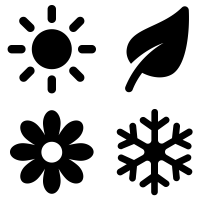MMM Data: What Data Do I Need for Marketing Mix Modeling?
04/04/2023
More brands are turning to Marketing Mix Modeling (MMM) due to privacy-driven data loss and the death of Multi-Touch Attribution (MTA). For an overview of MMM and MTA, check out OptiMine’s educational blog posts below:
While evaluating MMM, the question “What data do I need for Marketing Mix Modeling?” will likely come up. Analytics people who are new to Marketing Mix Modeling need to think about how to prepare and support new MMM initiatives and solutions, which all circles back to the data.

What is Marketing Mix Data?
Marketing Mix Modeling is a predictive modeling technique. The value, accuracy, reliability, and quality of any predictive model rests on the inputted data. In addition, the experience, judgment and empirical skills of the modeler are also highly important. And, the KPIs or outcomes that the marketer wants to measure drive a lot of the data that will be used– e.g. that the “answer” drives the inputs– or data, or variables (which are really about the data) determine what will go into the model.
What Data is Required for MMM?
There are 3 main types of data that are required for MMM:
1. The outcome / KPI / metric being measured.
For example, for a retailer looking to measure sales revenue as an outcome, sales data from their e-commerce and physical stores will be needed along with interesting breakouts such as new versus existing customer sales, product category breakouts, mobile device usage, loyalty program membership, geography (such as DMA).
2. Marketing data
You must ask yourself: what marketing campaigns were running during the period being measured? It is important to have ALL channels– digital, traditional, paid, earned, owned– factored in accordingly. Measuring only digital, for example, would ignore the potentially major effects of traditional channels (like TV) if it was running at the same time. By not taking all channels into account, wrong/inaccurate measures will result.
Additional marketing data such as spend, impressions, and other interesting splits or breakouts such as device/ad delivery modes, customer/audience segments, creative, geography (ex. DMA), product categories, etc. are also important if the marketer wants to break out results across these important dimensions.
3. Non-Marketing Data– AKA “exogenous” factors
It is very important to break out the incremental effects of marketing. Too many marketing measurement solutions mis-allocate credit for campaigns because they fail to account for some of the most fundamental sales drivers. Does a retailer’s sales increase every year during the period between Thanksgiving and Christmas solely because of advertising? No. Seasonality– in this case, holiday seasonal lift– drives a major part of the increase in sales. And if your marketing mix model fails to account for this, the measurement of a campaign’s contribution is likely to be highly inaccurate.
Here are the most common examples of “exogenous” factors:
1. Promotions & discounts: Many brands falsely equate the contribution of a coupon or discount with the marketing channel used to communicate and deliver the promotional price. For example, if you send a 10% discount coupon via direct mail and the redemption rate is 10%, does that mean direct mail marketing drives an incremental lift of 10%? Absolutely not. The discount itself is a primary driver of the sales.

2. Seasonality: Many brands experience different seasonal patterns where sales naturally increase or decrease for periods of time. Accounting for these seasonal patterns is essential to tease apart the effects of marketing during these same periods. Using historical data over time allows the analyst to split apart these effects.

3. Competitive factors: Is your competitor running a major promotion during your ad campaign? Did they open a new store nearby? Are they advertising more heavily than your brand? These can all impact your sales and mask your own advertising performance.

4. Economic conditions: Failing to account for the broad effects of the economy– whether it is going well or poorly– will create large accuracy issues for a brand’s marketing measurement.

5. Weather: Weather dictates consumer actions (methods of travel, food to eat, how to dress, etc.), and it even influences our moods when it comes to spending money.


Where– and How– to Get the Right Data
Time dimension
All of the data above needs to be gathered over time (usually 3+ years).
ETL and Data QA considerations
This includes garbage in/garbage out impacts.
What about COVID?
There were drastic consumer behavior changes because of the pandemic that may now have become the “new normal”– prior consumer behavior and historical norms might no longer apply.
Things to Think About if This is Your First Time Working with MMM

If this is your first time working with Marketing Mix Modeling, here are some things to consider:
- Expertise is very critical. There is high risk in building MMM models without an experienced guide. Bad models will wreck performance and ultimately revenue because you’re using flawed information to drive decisions.
- Data quality challenges can kill an MMM initiative
- Resource contention/allocation issues create delays
- Experience using MMM to guide decisions is critical to success
- Optimization– running scenarios and having tools to do so– is extremely difficult to build and support
- Resource allocation / trade-offs– When you are building models, it means that you aren’t doing other priority work. Therefore extra staffing with deep experience is needed so that you don’t suffer as a company by devoting resources to a very time-intensive activity and ignore other high priorities in the process
- Speed matters more than ever now– MMM models are not “agile” if they are built and managed manually
OptiMine is your agile Marketing Mix Modeling solution, providing the fastest, most actionable cross-channel measurement for all digital and traditional marketing across any online and offline conversion points. Interested in learning more? Contact us today!

